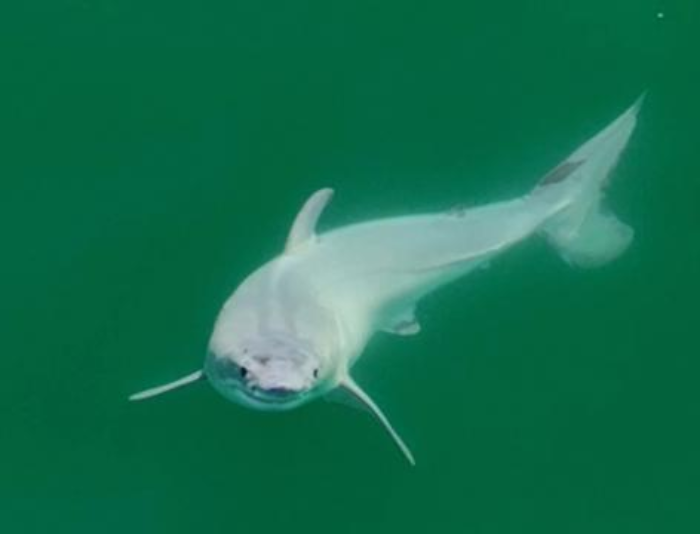A rare sighting of a baby great white shark has left researchers astonished off the coast of California. Captured on film by wildlife filmmaker Carlos Gauna and UC Riverside biology doctoral student Phillip Sternes, the footage reveals a 5-foot-long shark shedding a mysterious white layer, potentially signaling a newborn.
The discovery, documented in a recent paper in the Environmental Biology of Fishes journal, challenges long-standing mysteries surrounding great white shark birthing habits. Great whites, known for their elusive nature, are the largest predatory sharks globally, and until now, no one had observed a live newborn in the wild.

Newborn Great White Shark Sightings
Gauna, popularly known as The Malibu Artist, has spent thousands of hours filming sharks worldwide. However, this particular observation near Santa Barbara on California's central coast stands out.
The researchers believe the white layer being shed from the shark is an embryonic substance, pointing towards the possibility of witnessing a newborn great white shark shedding its intrauterine milk.
The significance of this discovery extends beyond the awe-inspiring visuals. The birthing habits of great whites have remained a mystery, with scientists unable to pinpoint where they give birth.
Gauna emphasizes, "Where white sharks give birth is one of the holy grails of shark science. No one has ever been able to pinpoint where they are born, nor has anyone seen a newborn baby shark alive."
Experts Weigh In
Several factors support the hypothesis that the observed shark is indeed a newborn. The proximity to the shore-roughly 1,000 feet from the beach-is unusual, challenging the belief that great whites are born farther out at sea. Gauna's previous observations of large, likely pregnant great whites in the area add weight to the theory.
Phillip Sternes, the biology doctoral student, offers further insights, stating, "I believe what we saw was the baby shedding the intrauterine milk." The shark's size, shape, and behavior observed-thin, short, and rounded-align with characteristics typical of a newborn great white, possibly only hours old.
However, scientific skepticism exists, with experts urging caution in interpreting the observation. Christopher Lowe, a marine biology professor at California State University, suggests that the observed shark might have a skin condition, emphasizing the need for further evidence (via the Washington Post).
The mystery surrounding great white shark pregnancies and births stems from the elusive nature of these apex predators, spending much of their lives in the middle of the Pacific Ocean.
The technology to remotely follow them has only recently become available, leaving many aspects of their reproductive behaviors unknown.
What's Next?
Despite the skepticism, the researchers remain determined to shed light on this rare phenomenon. Sternes and Gauna are planning round-the-clock surveillance this summer to gather more evidence and potentially collect samples for further analysis.
The implications of confirming the California coast as a great white birthing ground are substantial. Great whites are listed as an international endangered species, making the protection of potential birthing waters crucial for their conservation.
Stay posted here at Tech Times.
Related Article : New Research Reveals Megalodon's Stocky Image with Surprising Body Shape Revelations


![Apple Watch Series 10 [GPS 42mm]](https://d.techtimes.com/en/full/453899/apple-watch-series-10-gps-42mm.jpg?w=184&h=103&f=9fb3c2ea2db928c663d1d2eadbcb3e52)


